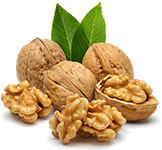
- Famous Brand Promotion:
 010-63457516
010-63457516 -

 Favorites
Favorites

 010-63457516
010-63457516
 Favorites
Favorites
Peanut has always been one
of China’s important oil crops and food raw materials. According to the data of
the Ministry of Agriculture and Rural Areas, the national peanut planting area
currently amounts to more than 75 million mu, with an annual output of
approximately 20 million tons, accounting for approximately 40% of the world’s
total peanut production. According to a recent interview by the First Financial
reporter, as the country with the largest peanut production and consumption all
over the world, China is facing a severe shortage of the oil, over 60% dependence
on imports of the edible oil raw materials, and a decline in both peanut
cultivation and export in the recent years. China’s peanut industry urgently
needs a better, more efficient and sustainable development model.
A few days ago, when visiting the Mars Global Food Safety Center in Beijing, the reporter learned that the problems of the traditional peanuts, such as the intolerance to storage and high aflatoxin pollution rate, may be solved in the promotion and cultivation of the high oleic acid peanuts and the improvement of the industrial chain. Relevant data from the Ministry of Agriculture and Rural Areas show that high oleic peanut is currently cultivated in China in an area of only approximately 2 million mu, and its commercialization has just started. However, the annual growth rate of 400% of the cultivated area and the characteristics of the high-quality oil structure, storage resistance and high quality are still optimistic about its development prospects by many people in the industry.